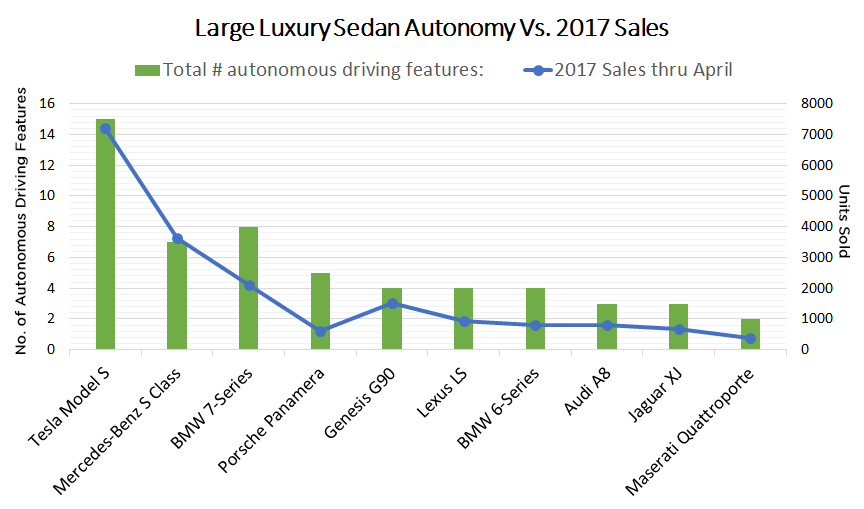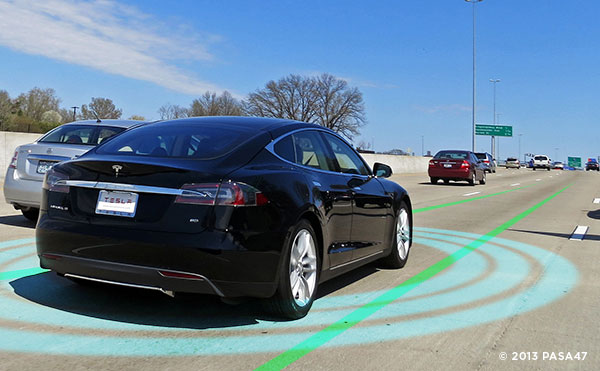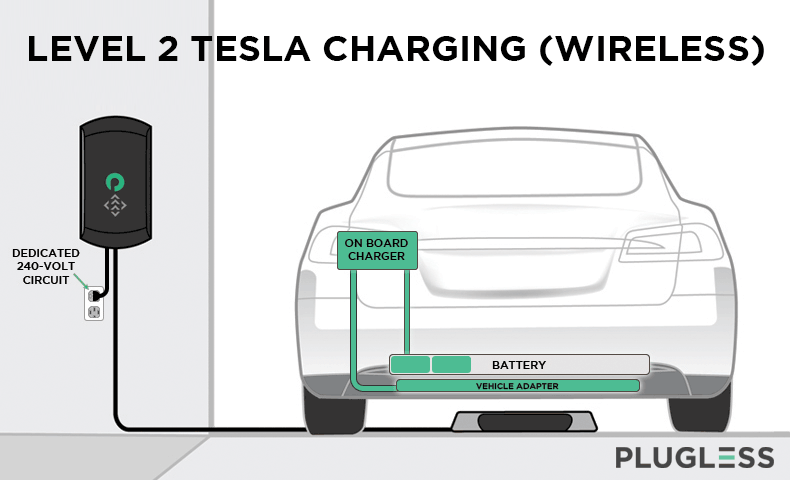How Will Autonomous Vehicles Charge Themselves?
By Mia Yamauchi
The success of Tesla’s Model S proves more than the market case for electric vehicles. It also shows the market is accelerating straight into autonomy as a central tenet of our sustainable transportation future.
You can see the market demand for autonomy in vehicle sales today. Look at these YTD sales of large luxury sedans. With few exceptions, the more autonomous features, the better the sales.
This goes for gas, hybrid, and plug-in versions across manufacturers of top-selling large, luxury sedans.
As Luxury Sedans Go, So Goes the Universal Car Fleet
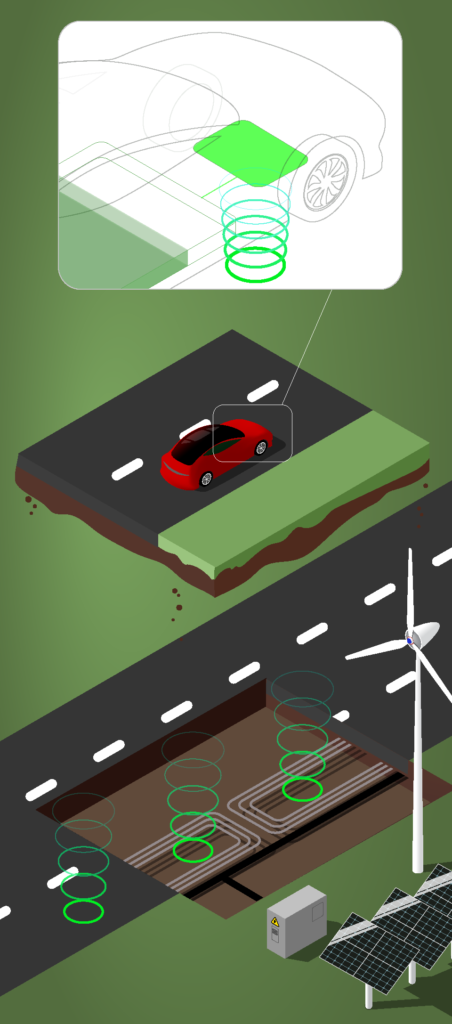 Air bags and forward collision warning systems first debuted in the high-end sedan segment. Now it’s hard (or illegal) to sell a new car without these automated safety features. Active lane-keep assist, emergency braking and autonomous navigation are on the same path. They’re the next logical steps in the safety advances of the modern vehicle fleet.
Air bags and forward collision warning systems first debuted in the high-end sedan segment. Now it’s hard (or illegal) to sell a new car without these automated safety features. Active lane-keep assist, emergency braking and autonomous navigation are on the same path. They’re the next logical steps in the safety advances of the modern vehicle fleet.
At some point vehicle autonomy will reach a tipping point. Once machines can navigate independently and are deemed safer than human operators, use becomes radically more fluid. Transportation is redefined as an autonomous service. With choices between shared service and individual service, you’ll pay for the degree of quality, luxury, and experience you value.
Will the Self-Driving Fleet Run on Electricity or Gas?
Ultimately, personal transportation will electrify based on sustainable sources. As best said by Elon, “it’s tautological”. Non-sustainable energy sources will end. Sustainable energy for the foreseeable future will be best stored and transported as electricity.
Besides, we’ve all seen enough Terminator movies to intuitively believe gas-spraying autonomous robots might not be the best autonomous answer. Science fiction aside, there are very few commercialized autonomous fossil fuel refueling products available today, with good reason. It is challenging to build effective, safe robotic refueling in a cost-effective manner that is widely commercially available outside of highly controlled environments. And even if that challenge were overcome, it wouldn’t solve the costly distribution problem that is inherent to gasoline.
How Will Self-Driving EVs Refuel?
Leaders in the autonomy space have begun releasing early production versions of the suite of sensors, hardware and software to implement every aspect of the autonomous service model. Except one: autonomous charging.
There is a certain irony in the charging problem. Cars can see through fog, traffic, avoid an accident, save your life. But for full autonomy you must get rid of dragging a cord or pump over to charge or refuel.
EVs have two existing solutions for autonomous charging: conductive (robotic) chargers or inductive (wireless) charging pads. Both technologies have valid applications.
Robotic Snake Chargers vs. Wireless Charging Pads for Electric Self-Driving Cars
The Tesla “snake” charger is the best known example of a robotic conductive EV charging prototype. Despite the oft-commented creep factor and system complexity, the ability to create conductive connection in controlled, supercharging-type environments can quickly deliver a rapid charge and get the autonomous vehicle back in action. One imagines that soon there will be clusters of robotic autonomous superchargers in a controlled area with lines of self-driving Teslas queuing up for their quick charge.
Superchargers’ geographic grouping streamlines providing the significant electrical infrastructure supply and regular maintenance required for the many moving parts.
If supercharging remained free for life, it’s a winning concept to send your Model S off to charge at a bank of Supercharger.
One long-term hurdle with robotic supercharging is battery health. Tesla limits supercharging and DC fast charging, as after ~245? cycles, battery health is affected. Longer term solutions for autonomous charging will have to look past quick charge. Autonomous fleets will seek a sustainable source of charging that maximizes battery efficiency and health.
For daily home charging or top-off charges at the grocery store, mall or office, robots make less sense. Once chargers are virtually everywhere, it will be expensive to manage and maintain a vast, distributed network of conductive robot chargers. In the long run, the multiple reduced friction points and daily wear-and-tear are key issues that robots cannot solve.
Wireless / Inductive Charging for the Autonomous Electrified Fleet
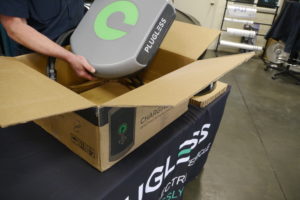
Plugless customer unpacks their wireless charging pad for Model S.
Wireless charging pads deliver the ideal solution for hands-free EV charging right now, helping to prepare the EV fleet for its autonomous debut as existing “full self-driving” hardware is activated. Installation is simple, as the base station connects to the same type of 240 circuit as any other Level 2 charger. The hardware is even simpler.
Wireless charging pads require no physical connection to the car. The charging pad itself has no moving parts and is completely sealed inside of an airtight shell. Installation can be as simple as plugging in the base station and placing the pad in a parking space. Plus, maintenance is virtually zero. Eventually the charging pad will be integrated into the asphalt itself, so any EV that parks in a Wireless Charge-enabled space will top off automatically.
Of course, for supercharging, wireless charging over an air gap isn’t the best solution. And that’s fine because stationary charging isn’t the end game.
The shift to miles-as-a-service and eventually self-driving allows the vehicle fleet to operate at near 100% capacity, swapping between commute duty during the day and deliveries at night. Losing several hours of drive time per day to recharge would be a shame, and could risk slowing rates of EV adoption for autonomous fleets.
The ideal way to optimize EV charging is to roll out infrastructure that allows electric cars to charge while driving. Only an inductively charging EV fleet can use dynamic charging roadways to pick up energy as they go (unless we want to go with the messy overhead wires of old-school electric buses). With a circulating autonomous fleet, we can cut mega hours of wasted vehicle standby. We can turn the whole vehicle fleet into a super effective, intelligent, route-optimized transportation machine.
| The Case for Inductive (Wireless) Charging for Self-Driving Electric Cars | |
|---|---|
| PROS | CONS |
|
|
|
|
|
|
|
|
|
|
|
|
|
|
|
|
The one ‘con’ for wireless EV charging is a moot point. For one thing, there would be plenty of wasted energy with centralized robotic supercharging, simply because vehicles would need to travel back and forth between the charging banks. Plus, technicians would be driving out to repair, oil, or re-calibrate robotic charging arms. All of that energy would be saved with fully self-contained, weatherproof wireless charging pads.
In the long run, when we’re getting our energy from solar panels that we produce with recycled materials in a factory powered by wind energy, no one will mind extra 1-2 kWh per day. EVs that constantly sip electrons via dynamic charging roadways will become a seamless network. The fleet will run near full capacity with very little lost vehicle time, and we get far more useful miles out of each car without any added smog pollution.
The electrified, autonomous transportation future will be better, cleaner, faster. And it will be wireless.

